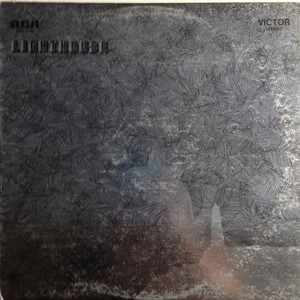Information/Write-up
Lighthouse – Canada’s Towering Horn-Rock Experiment
When Lighthouse appeared in Toronto in 1969, they were unlike anything else in Canadian music. Conceived by drummer and songwriter Skip Prokop and composer Paul Hoffert, the band’s central idea was audacious: to fuse a rock rhythm section with a horn quartet and a string quartet, making a single ensemble that could handle symphonic textures, improvisational jazz passages, and pop hooks with equal ease. The result was a sound both sweeping and unpredictable—part brass band, part chamber group, part psychedelic rock combo.
Prokop brought hard-won road experience from The Paupers, one of Toronto’s most important ’60s rock exports. Hoffert, meanwhile, was a classically trained vibraphonist and arranger who had already studied composition and even experimented with early synthesizer technology while completing his degree at the University of Toronto. Together with Detroit guitarist Ralph Cole, they set about building a lineup that stretched to thirteen musicians, recruiting members from the Toronto Symphony Orchestra alongside seasoned rock players.
Their debut, Lighthouse (1969), launched with a flourish: the band’s first Toronto show at the Rockpile was introduced by Duke Ellington, and their second gig was at New York’s Carnegie Hall. Yet early recordings for RCA struggled to find a radio foothold. AM programmers balked at sprawling tracks that mixed fuzz guitar with extended brass and string passages. Still, the band’s live reputation grew, and by the time of Suite Feeling and Peacing It All Together, Lighthouse was on every major Canadian festival stage. They even turned down an invitation to Woodstock—an omission that would haunt them.
The turning point came in 1971. With original singer Pinky Dauvin gone, Bob McBride stepped in as frontman, bringing a soulful clarity that helped tighten the band’s focus. At the same time, the group shifted from extended suites to more concise, radio-ready songs without losing their orchestral bite. The result was One Fine Morning, an album whose title track stormed Canadian charts (#2 RPM) and crossed into the U.S. Top 30. For a Canadian act in the pre-CANCON years, this was a breakthrough on par with The Guess Who.
Success followed in a rush. Lighthouse Live! became the first Canadian album to sell over a million copies, while singles like “Sunny Days,” “Take It Slow,” and “Pretty Lady” kept them in regular rotation. They were fixtures on both sides of the border, playing Expo ’70 in Osaka, the Isle of Wight Festival, and a landmark collaboration with the Royal Winnipeg Ballet called Ballet High, which toured nationally. For a brief moment, Lighthouse seemed poised to rival Chicago and Blood, Sweat & Tears, the two American horn-rock juggernauts they were constantly compared to.
But ambition came at a cost. With as many as thirteen musicians on payroll, touring and recording were expensive, and the industry’s patience wore thin when singles failed to break in the U.S. By 1973, McBride’s erratic behaviour—fuelled by addiction—caused major rifts, and Prokop himself grew weary of life on the road. Albums like Can You Feel It and Good Day still contained flashes of brilliance, but the momentum of One Fine Morning could not be sustained. By the mid-1970s, Lighthouse had dissolved, leaving behind nine albums, nearly two dozen singles, and one of the most ambitious catalogues in Canadian rock.
The story didn’t end there. Periodic reunions—from a massive Ontario Place concert in 1982 to later tours through the 2000s—reminded audiences of their singular energy. Beyond the band, members continued to make their mark: Hoffert became a noted composer and author, Howard Shore emerged as one of the most celebrated film composers of his generation, and Prokop’s songs continued to be covered long after his passing in 2017.
More than a “Canadian Chicago,” Lighthouse proved that Canadian rock could be as bold, complex, and technically dazzling as anything from abroad. Their blend of classical precision, jazz swing, and rock drive was ahead of its time, and their hits remain radio staples—a reminder of a moment when a thirteen-piece Canadian ensemble managed to light up the international stage.
-Robert Williston
Howard Shore: alto sax
Grant Fullerton: bass, vocals
Don Whitton: cello
Leslie Schneider: cello
Ralph Cole: guitar, vocals
Paul Hoffert: keyboards, vibraphone, Arranger, Musical Director
Skip Prokop: drums, vocals
Pinky Dauvin: lead vocals, percussion
Russ Little: trombone
Arnie Chycoski; trumpet, flugelhorn
Freddy Stone; trumpet, flugelhorn
Ian Guenther: violin
Don Dinovo: violin, viola





No Comments